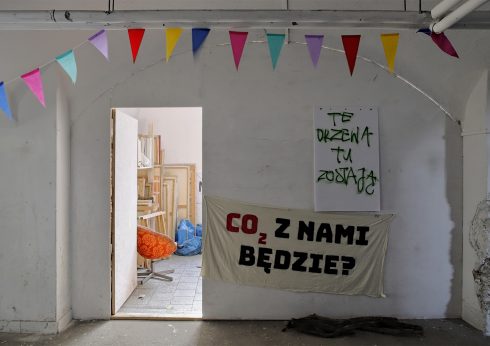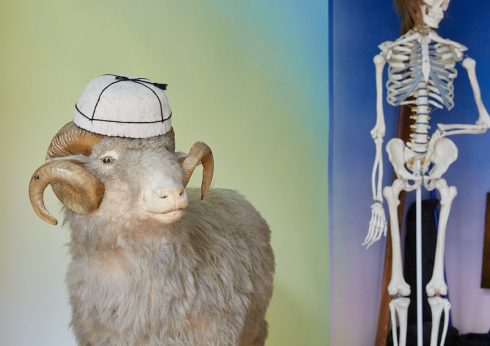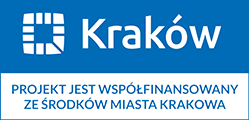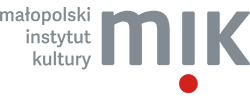
Agata Kus’s studio
Anna Stankiewicz Małopolski Instytut Kultury w Krakowie Agata Kus interviewed by Agnieszka Jankowska-Marzec A.J.M: You’re an (...)Agata Kus interviewed by Agnieszka Jankowska-Marzec
A.J.M: You’re an artist who most eagerly speaks through painting, but not only.
A.K: I generally deal with many things. Already while studying at the Faculty of Painting of the Academy of Fine Arts in Kraków I experimented with various media, trying my hand at video, drawing, and even sculpture. I must be lucky that my manual skills allowed me to master the skills of these media fairly quickly, and I don’t find working with them difficult. I find learning new techniques a great pleasure and being close to various materials has different impacts on the senses. I find change refreshing and invigorating, but not a goal in itself. Whenever I have a new idea I try to accommodate a proper medium for it, and not the other way round. I find the idea far more important than the convention of its performance, than the way I will materialise the concept. I feel best with painting, and in the end, I always return to it.
A.J.M: Precisely, there’s often plenty of time from the emergence of new ideas to their realisation.
A.K: Postponing realisation is sometimes dangerous. Experience has taught me that you need to bring ideas to life immediately. Unfortunately, I have tens of sketches, collages, and folders in which I noted them when they were still fresh and then didn’t use because they lost their freshness. They were worked over in my head, sometimes with the whole cognitive part of the painting process. In this case, completion would only have been a painful duty and not an interesting process.
A.J.M: Where do you look for inspiration for your works?
A.K: I paint figural compositions, so it’s hard to believe that everything happens spontaneously although it is partially true. Especially in the building of my most recent oil paintings, I select and juxtapose elements of the collages intuitively. As a result, they are not only the straightforward sum of the aesthetics, but they build an entirely new semantic narrative. The fragments of various, seemingly unconnected representations react with one another, creating a relationship with entirely different properties than its individual components. I paint many people I know, and situations and places that I gather in the form of photographs from different sources. I’ve recently noticed that my painting is becoming lighter, and the painting itself is now a far less painful process than it used to be. I have recently completed several canvases presenting the guys from Neal Cassady, a band I have befriended, and we have organised an exhibition and concert at the Zachęta Gallery together, as well as a CD cover and some minor video pieces. Various circles hide surprising and inspiring images within, and cooperation with other artists and inspiration with their creative work can bear surprising fruit.
I just love painting girls and this is probably why feminism is a frequent key to the interpretation of my works. It does seem to fit some of them, but I myself would never dare to call my art feminist. I have no programme or mission. Retaining a critical attitude, I try to look at the world to notice its sensitive spots. I am not ashamed of classically construed “beauty”, the figurative and realistic qualities in painting, although some would say that this is not in line with the current fashion. It makes me laugh when somebody tells me what I should paint and how. Nor am I afraid of disfiguring, destroying, or defacing my works. Beauty is vested in variety, and I know how to be spellbound with people irrespective of their gender or age. I find it difficult to answer the frequent questions about what my paintings are about. What I want to say I express in a painting. Painting is a separate language, at times not translatable into words. You can easily mistranslate them.
A.J.M: I’m going to be stubborn here, as I want to learn what influences your creative activity. Perhaps some stimuli from beyond the visual arts?
A.K: These inspirations are usually strictly connected to the circles in which I move, talking and working with cool people. Sometimes I can create a series of paintings that starts with something as simple as a word. The concept of the entire Bliźniaki series started with being inspired by the Polish word for scar – blizna, and the procedures of disfiguring the figures in the paintings by burning holes in them with a cigarette. At the time it was done by the visiting poet, Świetlicki. Later the word evolved and turned into bliźniaki – twins – which was also reflected in the construction of the scenes. This naturally passed into multiplications, mechanical copying, and reflections. I like to think about my paintings as contemporary poetry, whose verses are often constructed from colloquial words and descriptions of the everyday phenomena. Their skilful juxtaposition contains many mysteries whose discovery can be attractive.




